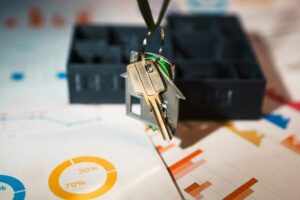The number of people having to pay tax on their savings will almost double over two years to the end of the current tax year, a Freedom of Information request from AJ Bell can reveal. More people will be pushed into paying tax on their savings as interest rates have risen and people hit their tax-free limit.
The Personal Savings Allowances protects many people from paying tax on their savings interest, but it has remained at current levels since it was introduced more than eight years ago. The Personal Savings Allowance currently stands at £1,000 for basic rate taxpayers and £500 for higher rate taxpayers. Additional rate taxpayers get no exemption and pay tax on all cash interest they receive outside a tax wrapper.
The figures show that almost 2.1 million people are expected to pay tax on their savings this year, up from around 650,000 just three years ago. The number of basic-rate taxpayers being hit with the tax will near 1 million people, up from just half a million in 2022/23.
However, these figures are lower than the initial amount forecast by the Government. An FOI last year showed that the Government projected 2.7 million people would be hit with tax on their savings in the 2023/24 tax year, which has now been revised down to 1.9 million. This could be down to many factors, including more people using a cash ISA to protect their savings from tax, fewer people switching to higher interest savings accounts, and interest rates not being as high as HMRC initially projected.
Regardless, it still means that around 1 in 30 basic-rate taxpayers are expected to pay tax on their savings this year, up from less than 1 in 100 three years ago. Almost 1 in 10 higher-rate taxpayers are expected to pay the tax now, compared to around 1 in 25 just three years ago.
| The total number of people with Income Tax liabilities on savings income | |||||
| Tax year | Savings rate | Basic rate | Higher rate | Additional rate | Total |
| 2020-21 | 18,500 | 338,000 | 218,000 | 224,000 | 799,000 |
| 2021-22 | 14,100 | 226,000 | 158,000 | 249,000 | 647,000 |
| 2022-23 | 30,800 | 505,000 | 344,000 | 286,000 | 1,170,000 |
| 2023-24 | 55,900 | 873,000 | 537,000 | 435,000 | 1,900,000 |
| 2024-25 | 57,300 | 954,000 | 590,000 | 471,000 | 2,070,000 |
| Source: HMRC/AJ Bell. The 2020-21 and 2021-22 figures are outturn based on the 2020-21 and 2021-22 Survey of Personal Incomes (SPI) respectively. The 2022-23, 2023-24 and 2024-25 estimates are based on the 2021-22 SPI. | |||||
Laura Suter, director of personal finance at AJ Bell, comments:
“Previously the majority of people didn’t need to worry about paying tax on their savings, as interest rates were low and the Personal Savings Allowance was sufficient to cover most people. But now a tricky combination of interest rates rising, cash ISAs being shunned for decades, more people moving into higher tax brackets and seeing their Personal Savings Allowance cut, and the tax-free allowance being frozen means lots of people are being dragged into the tax.
“The figures are lower than previous estimates from the Government, which is likely due to a number of factors. We know more savers have used cash ISAs to protect their savings from tax, thanks to high-profile campaigns about the number of people who are likely to be hit with tax bills. Bank of England data shows that April was a record-breaking month for cash ISAs, with £11.7 billion being put in the accounts, marking the highest amount since ISAs were introduced in 1999. This trend has continued, with more people using ISAs since tax-year end to protect their cash from unwanted tax.
“Previously savers often had to make a decision between getting the highest interest rate with a non-ISA account and using a cash ISA, but ISA rates have more closely matched standard savings rates in recent years, removing one of the barriers to using an ISA.
“However, another reason for the drop in the figures could be that lots of cash savers are still apathetic when it comes to their savings. Despite interest rates having soared many people have left their money sitting in old savings accounts earning very little or no interest. Bank of England data shows that £252 billion of money is sitting in accounts earning no interest, and there will be much more in accounts with below-average rates. While this means people are less likely to hit their tax-free limit for savings income, it does mean they aren’t maximising their returns on cash.
“For those who have ditched and switched to get better rates and are now going to be hit with tax on their money, they often won’t realise until a brown letter lands on their doormat. Those filling out a self-assessment tax return will declare any savings interest, and subsequent tax due. But, for those taxed under PAYE, HMRC will calculate any tax due based on information sent to them by banks and building societies. It means many taxpayers will find there is a deduction made from their payslip each month, often before they’ve even realised they owe any money to the taxman.”














